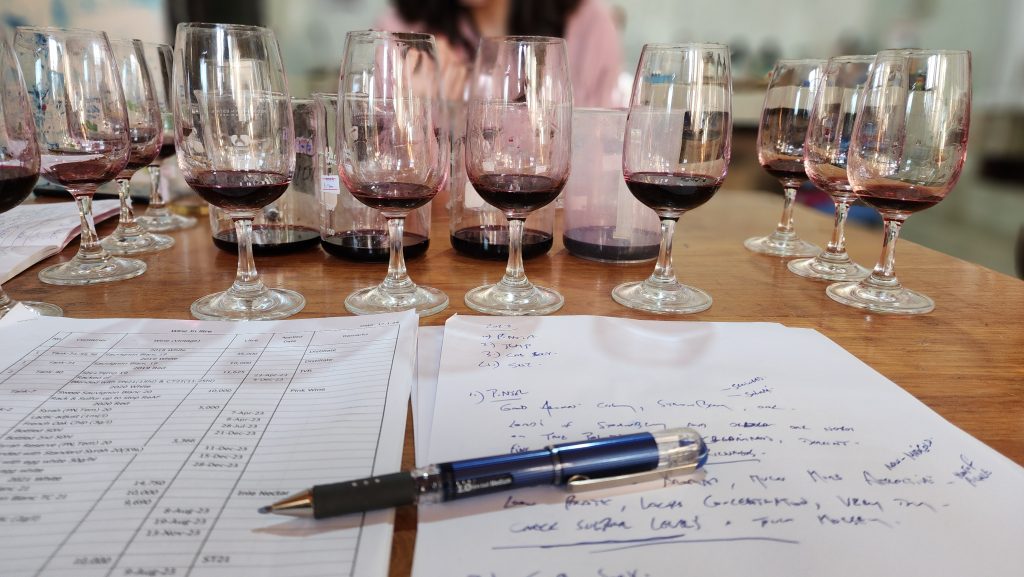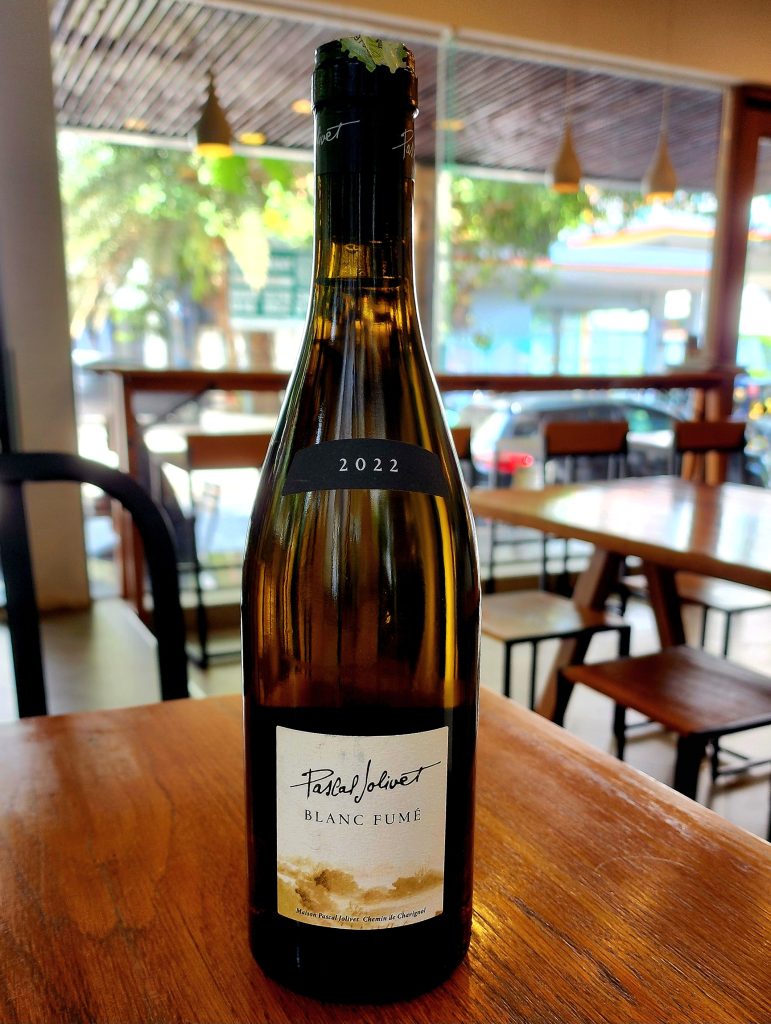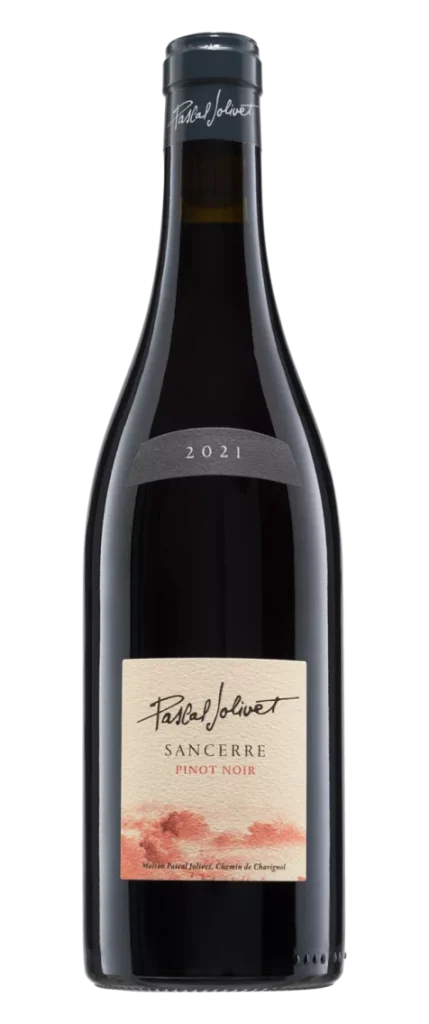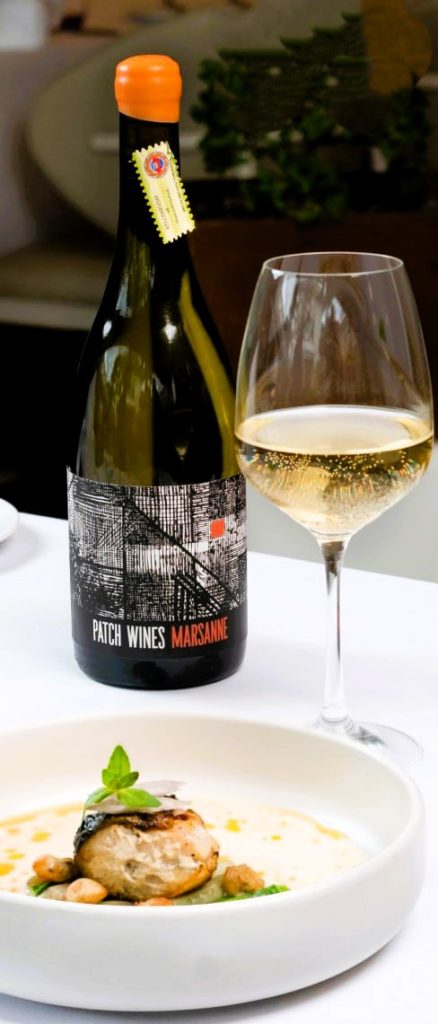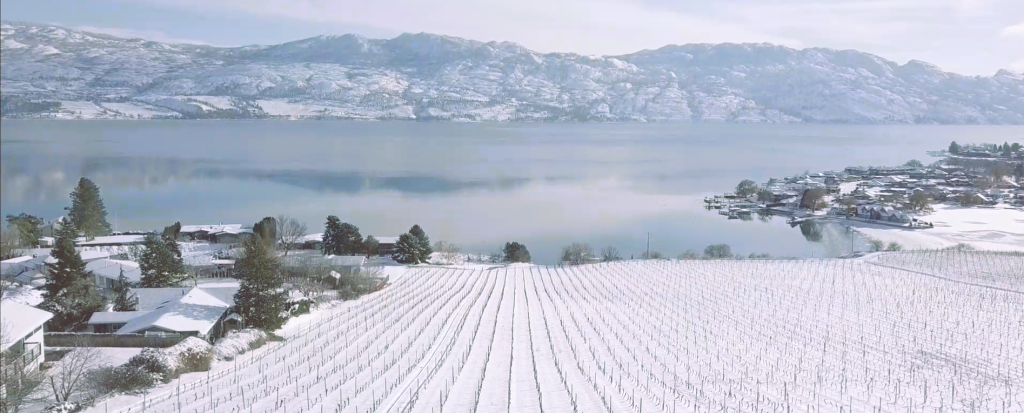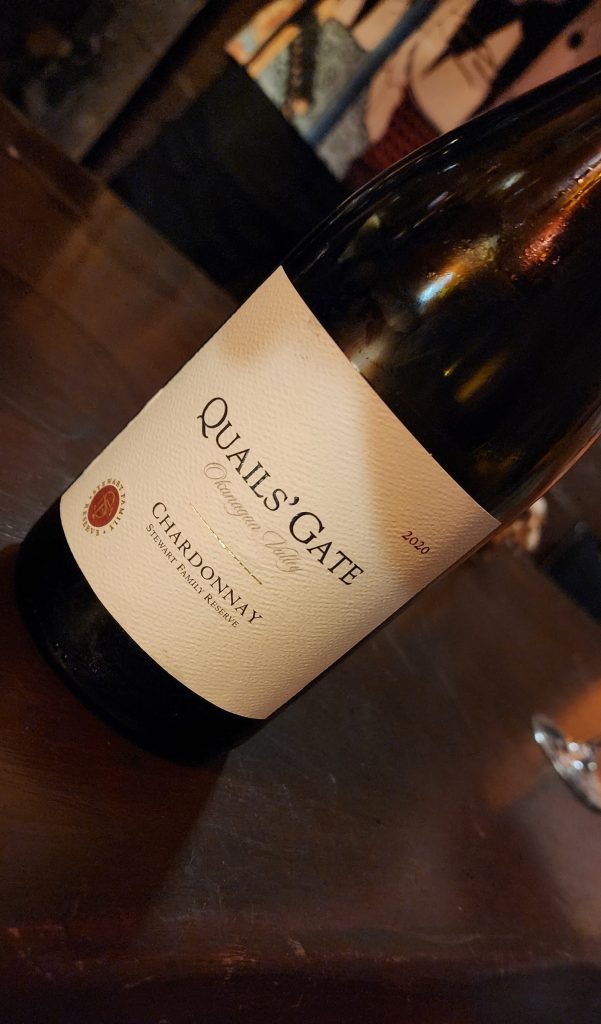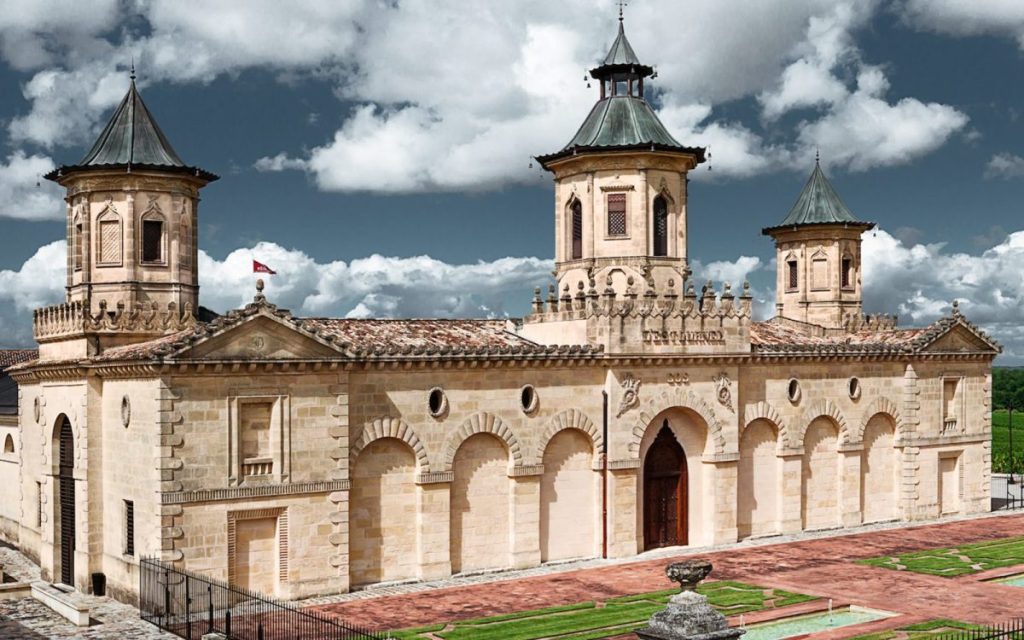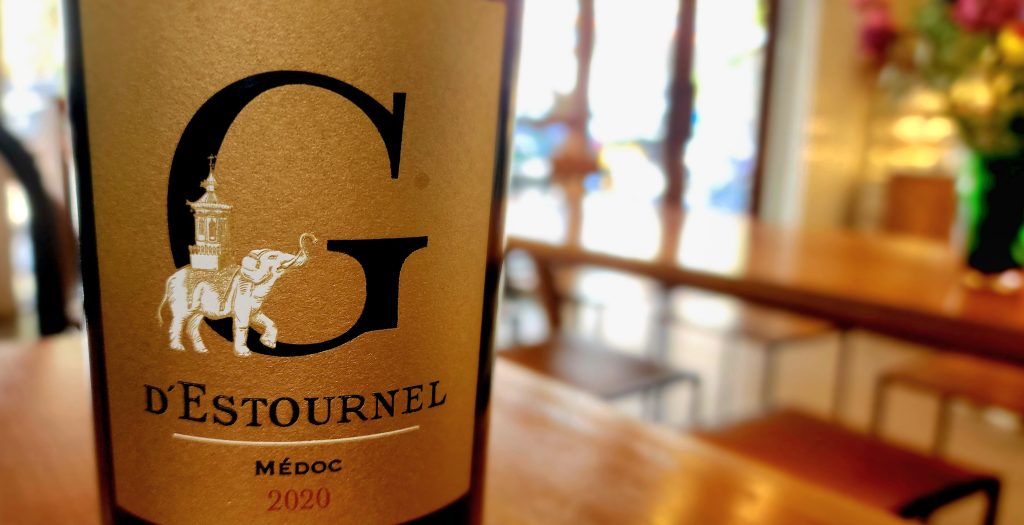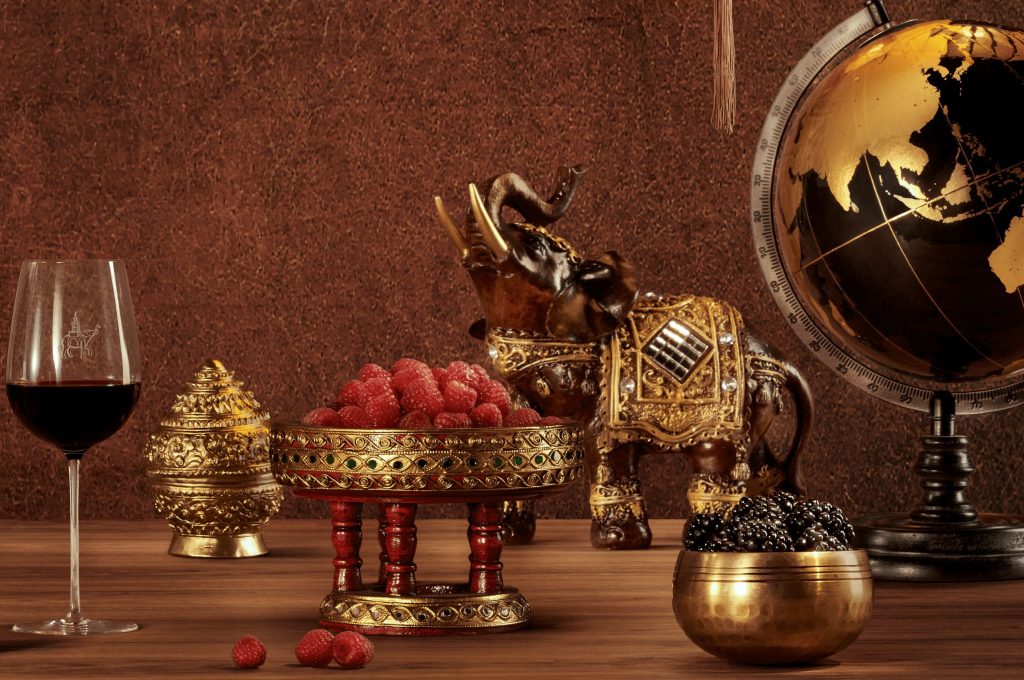Tasting Bench
Pascal Jolivet Blanc Fume 2022
Sauvignon Blanc grapes sourced from three different soil types, the wine is a blend of grapes grown on 50% limestone, 30% flint and 20% clay-limestone. The vineyards located in the villages Tracy-sur-Loire and Boisgibault.
Starting with the 2018 vintage, Jolivet changed the name of his Pouilly Fume to Blanc Fume. This was done in no small part to avoid consumer confusion with Pouilly-Fuissé (Chardonnay from the Mâconnais sub-region of southern Burgundy).
However, this also takes the wine back to the original name of the appellation, (created in 1937) which was Blanc-Fumé de Pouilly. This was the name Pascal Jolivet’s grandfather (Lucien Jolivet) used on his own labels. Blanc Fume means ‘smoky white and is so called for the struck match, gun smoke characteristics in the Sauvignon Blanc grown here, attributed to the terroir and the flint and schist soils. It is often referred to as pierre-a-fusil, which literally means rifle-stone.
The fruit for this wine is all sourced from Pascal’s own vineyards, which employ organic farming. Winemaking is gentle and as natural as possible, gravity-fed, wild yeasts, no enzymes, and very low sulphites.
The wine shows gorgeous fruit aromas of lemon curd, tropical notes, ripe passionfruit, a hint of Acacia and all with plenty of flinty gun smoke. The fruit is very precise and linear, with a squirt of tropical richness mid-palate, all wrapped up in ‘struck match’ flinty terroir notes. The finish is laser-like focused, with dazzling minerality, this is a very enjoyable wine.
Perfect with shellfish, seafood or bitter Asian soups and salads. Try it with a Shan tea leaf salad.
Pascal Jolivet Sancerre Pinot Noir 2021
The fruit comes from clay and limestone soils and is hand-harvested, sorted on the vine and again when received at the winery.
Two-thirds of the fruit is whole bunch vinified in large in conical wooden vats. Maceration is slow and gentle. Ageing takes place in seasoned wooden vats for eight months.
The colour is a light, clay-brick red. Aromas are of morello cherries and wild strawberries with hints of cranberry, rhubarb, forest spices and pencil box. On the palate, the wine really comes alive, with lovely concentrated and vibrant fruit in the fresh cherries and cranberry spectrum, giving way to notes of undergrowth, graphite, all-spice and some limestone minerality.
Very gluggable, easy, and attractive drinking here; it was delightful with beef quesadilla, tacos, and guacamole -enjoyed at Itacate in Phnom Penh.
Patch Wines, Marsanne 2022
The fruit comes from Nagambie in Central Victoria, where Marsanne has a long and successful history, thanks to the Purbick family at Chateau Tahbilk.
A third of the fruit was pressed off and fermented in stainless, a third went whole bunch into terra cotta, and the final third went whole bunch into a Speidel Egg.
The result is just brilliant; here is a wine of pristine fruit, with delightful purity and freshness, given subtle complexity by the different ferments and the way they hit the palate. The wine exhibits primary aromas of quince, marmalade, and apricot, with hints of acacia, dried straw, and beeswax.
On the palate, the fruit is generous but has poise and elegance; there is wonderful length through the palate and just enough acidity to keep it all tight and clean at the back. The aftertaste is an essay on the flush of youthful beauty.
A must-try for white wine lovers and divine with a platter of white bait, roast chook, charred artichoke hearts and some runny cheese.
Quail’s Gate, Stewart Family Reserve, Okanagan Valley, Chardonnay 2020.
The Stewart family are a fourth-generation Okanagan farming family, and their gorgeous 65-hectare property and vineyards rise from Lake Okanagan up the gentle slopes of Mount Boucherie in British Columbia, Canada.
Chardonnay fruit off mature vines, (over 30 years old) is whole cluster pressed and then fermented in a combination of stainless steel and French oak. A small portion undergoes malolactic fermentation then it is aged on its lees for nine months before blending and bottling.
An outstanding wine with beautiful intensity, expression, and elegance. Whiffs of white peach, custard apple, fig, and roasted cashew, supported by vanilla, buttered toast and oak spices. An elegant, creamy entry, very fine on the palate, seeps into the senses with grace and poise. The tension on the palate is beautifully balanced, there is rich, complex, ultra-cool climate fruit notes, tempered by fine oak and bright minerality. I really loved it, impeccable fruit, and great finesse, just stunning. Enjoyed at Kaizoku Sakaba in Phnom Penh.
G d’Estournel, Medoc 2020
The wine is made by Château Cos d’Estournel, the grand Cru (Second Growth) producer in Saint Estephe on the left bank of Bordeaux. The Chateau is rightly regarded as the great Saint Estephe producer and one of the finest wineries in all the world.
The estate was founded by Louis Gaspard d’Estournel who initially inherited Cos and Pomys in 1791. The name Cos refers to a “hill of pebbles” in the Gascon dialect. The name Cos d’Estournel was given to the property in 1810 by Louis Gaspard d’Estournel himself.
Born during the Age of Enlightenment, Louis Gaspard was said to be a man filled with curiosity about the world and its far-off places. His love of travel took him to India and Southeast Asia, which would leave a profound and lifelong effect on him. Soon, they became markets, and British officers stationed in India and Burma were enjoying shipments of Cos d’Estournel as early we 1838. The Asian markets were full of people, cultures and artworks for which Louis Gaspard developed a deep passion and would serve as inspiration for the unique and spectacular architecture of the estate, an exotic palace dedicated to wine, topped with majestic pagodas. The building looks like an Indian palace, surmounted by pagodas that are a blend of Mudéjar, Chinese, classical and Indian styles. Inside the statues of elephants, would become the symbol of the chateau. It is no wonder that friends and local villagers back in France were soon calling Louis Gaspard the ‘Maharajah of Saint-Estèphe.’
The winery’s own website suggests the G d’Estournel evokes the wonderment of an explorer returned home from the Far East. Someone now infused with a fascination with the Far East, his soul replete with luminous memories of majestic Indian elephants, shimmering Burmese gold, the finest of Nepalese silks, the warm glow of Vietnamese lanterns. The wine itself, a harmony of delectable fruit, a whiff of incense, the sheen of a case inlaid with mother of pearl… and memories of these refined, opulent delights suddenly spring back to life.
The G d’Estournel fruit comes from a vineyard known as the Goulée vineyard and is located in the north of the Médoc at Port de Goulée in Jau-Dignac-et-Loirac and covers a gravelly hill facing the Gironde estuary. The 2020 wine is 90% Merlot and 10% Cabernet Sauvignon.
Aromas of mulberry, red fruits, milk chocolate, star anise, and a whiff of tobacco leaf. On the palate, the wine is elegant, very drinkable and marked by impeccable, ripe Merlot fruit. A very enjoyable wine, the fruit is divine and the winemaking exceptional, this is an outstanding Merlot wine given perfect support and complexity by the small Cabernet Sauvignon component. Tannins are very fine and supple, the fruit elegant and attractive, this is an attractive, approachable wine that offers immense pleasure and is exceptional for the money.
Darren Gall

